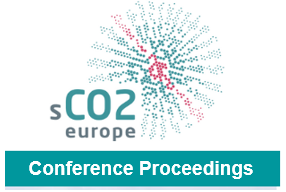Adiabatic compressed CO2 energy storage
As the energy market is moving worldwide towards low-emission solutions, there is a growing interest in plants capable of storing non-dispatchable renewable power, contributing to maintain the high quality level of current electrical infrastructure and ensuring spinning-reserve capability, complementing the lack of frequency control by most of solar and wind technologies. CO2 cycles, including supercritical ones, could be a solution to achieve this goal. Most of current efforts on CO2 cycles are devoted to study the most promising configurations for power production, including supercritical CO2 plants for solar energy conversion. Basing on such extensive state of the art and growing knowledge, this paper aims to analyse innovative energy storage solutions involving closed cycles, employing different working fluids in sub-critical or supercritical conditions, including CO2. Different plant configurations and operating conditions at 10 MWe design point are compared in terms of Round Trip Efficiency (RTE) and preliminary costs, benchmarked against traditional large scale storage solution such as CAES. Subcritical CO2 cycles is shown to be a very promising solution with RTE>70% and attractive cost features, thus being a potential candidate for utility scale energy storage.
Vorschau

Zitieren
Rechte
Nutzung und Vervielfältigung:
Dieses Werk kann unter einer Creative Commons Namensnennung 4.0 Lizenz (CC BY 4.0)
Creative Commons Namensnennung 4.0 Lizenz (CC BY 4.0)
genutzt werden.
